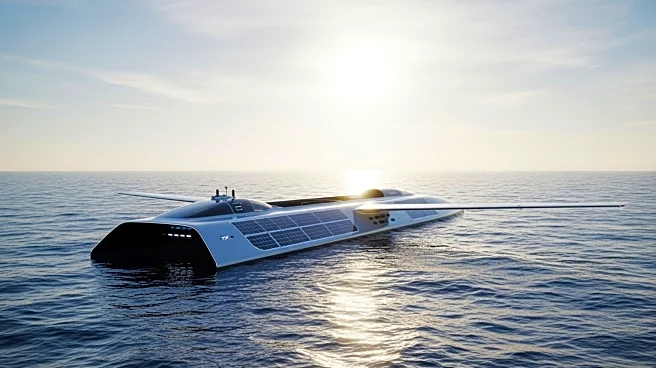What's Happening?
The Lightfish, a solar-powered unmanned surface vessel, has set a new speed record for crossing the Atlantic Ocean. Launched by the U.S. Navy from Sullivan's Island, South Carolina, the vessel reached Troia, Portugal, in just over two months. Manufactured
by Seasats, the Lightfish operates autonomously, equipped with solar panels, a battery, and a generator for extended range. The journey was monitored by various naval commands, demonstrating the vessel's capabilities in autonomous navigation and obstacle detection.
Why It's Important?
The successful journey of the Lightfish highlights advancements in unmanned naval technology, offering strategic advantages in military operations. These vessels can perform tasks without risking human lives, providing cost-effective solutions for surveillance and reconnaissance. The record-setting voyage demonstrates the potential for integrating autonomous systems into naval operations, enhancing capabilities while reducing operational risks. This innovation could lead to broader adoption of unmanned technologies in defense strategies.
What's Next?
Following its record-setting journey, the Lightfish will participate in a NATO exercise involving autonomous craft, led by Portugal. This exercise will further test the capabilities of unmanned systems in collaborative military operations. The success of the Lightfish may prompt increased investment in autonomous naval technologies, encouraging further research and development. Stakeholders in the defense sector are likely to explore additional applications for unmanned vessels, potentially expanding their use in various maritime missions.
















